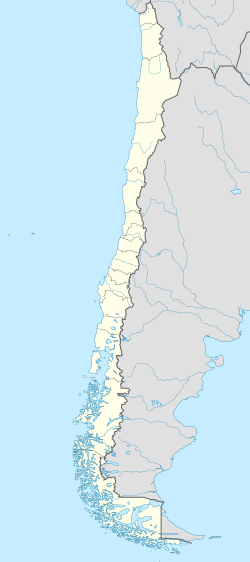| Location | |
|---|---|
| Location | Tierra Amarilla |
| Region | Atacama Region |
| Country | Chile |
| Coordinates | 27°27′53″S70°16′31″W / 27.4646°S 70.2752°W |
| Production | |
| Products | Copper, gold, silver as concentrate [1] |
| Production | 151,719 tonnes copper 91,000 ounces gold |
| Financial year | 2021 |
| History | |
| Discovered | 1987 (Phelps Dodge) |
| Opened | 1995 |
| Owner | |
| Company | Lundin Mining (80%) Sumitomo Group (20%) |
The Candelaria mine is a large open pit and underground copper-gold mine located in northern Chile in the Atacama Region. Candelaria has Proven and Probable Reserves of 676 million tonnes of ore grading 0.53% copper, 0.13 g/t gold, and 1.79 g/t silver; containing 3.58 million tonnes of copper, 3.0 million oz of gold and 39 million oz of silver. [2] The mine project incorporates a reverse osmosis plant at the port of Caldera, commissioned in 2013, with a capacity to produce 500 litres per second of desalinated industrial water, piping it 115 km from the Pacific Ocean to the minesite. [3] [4]
The project was operated since discovery in 1987 by Phelps Dodge Corporation, which was taken over by Freeport-McMoRan in 2007. Lundin Mining bought out Freeport's 80% stake in 2014. [5] [6]
Its tailings are processed in Planta Magnetita, located inmediately west of the mine pit, for the recovery of iron. [7]

